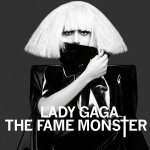Lady Gaga Topples Oprah
 Lady Gaga is bigger than Oprah. At least according to Forbes magazine’s annual “Celebrity 100” list. The pop star has dethroned the daytime talk show queen as the most powerful entertainer. Even though Oprah reportedly earned $290 million last year and Gaga trailed her at $90 million, what the next-gen icon lacks in financial force she makes up for in fan magnitude. Gaga has 32 million Facebook fans and 10 million Twitter followers. The number 3 spot on Forbes’ list went to teen heartthrob Justin Bieber who earned $53 million.
Lady Gaga is bigger than Oprah. At least according to Forbes magazine’s annual “Celebrity 100” list. The pop star has dethroned the daytime talk show queen as the most powerful entertainer. Even though Oprah reportedly earned $290 million last year and Gaga trailed her at $90 million, what the next-gen icon lacks in financial force she makes up for in fan magnitude. Gaga has 32 million Facebook fans and 10 million Twitter followers. The number 3 spot on Forbes’ list went to teen heartthrob Justin Bieber who earned $53 million.
 Forbes writes the “Queen Monster” grossed $170 million on 137 shows in 22 countries over the past 12 months and has sold an estimated 15 million albums worldwide. Advertisers want a piece of her with endorsement deals that include Polaroid, Virgin Mobile, Monster Cable, and Viva Glam. A Russian billionaire reportedly paid $1 million to appear in her “Alejandro” video. When the title track debuted from her new album, Born This Way (hits stores on May 23), it clocked one million downloads in five days, making it the fastest-selling song in iTunes history, reports Nielsen.
Forbes writes the “Queen Monster” grossed $170 million on 137 shows in 22 countries over the past 12 months and has sold an estimated 15 million albums worldwide. Advertisers want a piece of her with endorsement deals that include Polaroid, Virgin Mobile, Monster Cable, and Viva Glam. A Russian billionaire reportedly paid $1 million to appear in her “Alejandro” video. When the title track debuted from her new album, Born This Way (hits stores on May 23), it clocked one million downloads in five days, making it the fastest-selling song in iTunes history, reports Nielsen.
 It’s Gaga’s mastery of social networking that makes her powerful. She is an example of one of the most successful artists in terms of using social media to connect with fans, according to Joe Ciarallo, of Buddy Media, a Manhattan-based company. “She speaks to them. They’re what she calls her ‘Little Monsters,’ and she lets them know this song is for you. If you’re a fan, how awesome is that?”
It’s Gaga’s mastery of social networking that makes her powerful. She is an example of one of the most successful artists in terms of using social media to connect with fans, according to Joe Ciarallo, of Buddy Media, a Manhattan-based company. “She speaks to them. They’re what she calls her ‘Little Monsters,’ and she lets them know this song is for you. If you’re a fan, how awesome is that?”
But some critics question the 25 year-old pop diva’s staying power, arguing that while the Internet has catapulted Gaga and others into overnight “viral” sensations will she have a short shelf life. Time will tell.
 Many naysayers counted Madonna out as a flash in the pan when she appeared on the scene in the early 80s. Almost 30 years later she remains an icon who is known for continuously reinventing both her music and her image. Time magazine donned her one of the “25 Most Powerful Women of the Past Century” for being an influential figure in contemporary music. The Queen of Pop has sold more than 300 million records and is recognized by the Guinness World Records as the world’s top-selling female recording artist of all time.
Many naysayers counted Madonna out as a flash in the pan when she appeared on the scene in the early 80s. Almost 30 years later she remains an icon who is known for continuously reinventing both her music and her image. Time magazine donned her one of the “25 Most Powerful Women of the Past Century” for being an influential figure in contemporary music. The Queen of Pop has sold more than 300 million records and is recognized by the Guinness World Records as the world’s top-selling female recording artist of all time.
 Known for her outrageous dress styles, Gaga is often compared to Madonna. I too initially dismissed Gaga as simply a Madonna wannabe. After all, I am an original “Material Girl” fan who has every Madonna album (her debut one on vinyl) and I can vividly recall my first Madonna concert. Gaga relies on some of the same controversial, gimmicky, sensational antics that heralded Madonna to stardom. Not to mention that she possesses the same drive and determination to succeed apparently.
Known for her outrageous dress styles, Gaga is often compared to Madonna. I too initially dismissed Gaga as simply a Madonna wannabe. After all, I am an original “Material Girl” fan who has every Madonna album (her debut one on vinyl) and I can vividly recall my first Madonna concert. Gaga relies on some of the same controversial, gimmicky, sensational antics that heralded Madonna to stardom. Not to mention that she possesses the same drive and determination to succeed apparently.
 I have since grown fond of Lady Gaga. First and foremost she is talented. She can play the piano and she can “sang!” like in a ‘I have deeply planted roots in gospel and soul music kind of way.’ Second, she is entertaining—out there in the stratosphere—but an incomparable performer nonetheless. Check out The Monster Ball concert at New York’s Madison Square Garden on HBO. I watched it with my 19-year-old niece, 58-year-old sister and 82-year-old mother. Four different generations all moving to “Just Dance.” Third, Gaga is a shrewd operator.
I have since grown fond of Lady Gaga. First and foremost she is talented. She can play the piano and she can “sang!” like in a ‘I have deeply planted roots in gospel and soul music kind of way.’ Second, she is entertaining—out there in the stratosphere—but an incomparable performer nonetheless. Check out The Monster Ball concert at New York’s Madison Square Garden on HBO. I watched it with my 19-year-old niece, 58-year-old sister and 82-year-old mother. Four different generations all moving to “Just Dance.” Third, Gaga is a shrewd operator.
Today, college professors are teaching about Lady Gaga, 20 years ago they were teaching Madonna. And perhaps five years from now there will be courses on Justin Bieber—from YouTube to the Big Screen. Anyone who wants to get schooled on branding, marketing, and building a loyal fan base should study Gaga.
The University of Virginia now offers a class called “GaGa for Gaga: Sex, Gender and Identity.” Students are learning about Gaga’s influence on feminism and gender expression. Taught by grad student Christa Romanosky, the class is a prerequisite course to essay writing on the theme of how the mama monster pushes social boundaries.
 Spearheaded by sociology professor Mathieu Defleml, the University of South Carolina’s course called “Lady Gaga and the Sociology of Fame” explores the work and the rise to fame of the hitmaker: What makes a person famous and what does being famous mean in today’s culture? Defleml has characterized Gaga as being a “social phenomenon.”
Spearheaded by sociology professor Mathieu Defleml, the University of South Carolina’s course called “Lady Gaga and the Sociology of Fame” explores the work and the rise to fame of the hitmaker: What makes a person famous and what does being famous mean in today’s culture? Defleml has characterized Gaga as being a “social phenomenon.”
The theatrical dance-pop performer’s debut single, the international chart-topping hit “Just Dance,” established her as an up-and-coming superstar upon its release in 2008 on The Fame album. Born Stefani Germanotta on March 28, 1986, the Yonkers native attended Convent of the Sacred Heart, a private all-girls Catholic school in Manhattan, before proceeding to study music at New York University’s Tisch School of the Arts at age 17.
 Defleml says the central objective of his course is to unravel some of the sociologically relevant dimensions of the fame of Lady Gaga with respect to her music, videos, fashion, and other artistic endeavors, with special attention for the role of: business and marketing strategies; the role of the old and new media; fans and live concerts; gay culture; religious and political themes; sex and sexuality; and the cities of New York and Hollywood.
Defleml says the central objective of his course is to unravel some of the sociologically relevant dimensions of the fame of Lady Gaga with respect to her music, videos, fashion, and other artistic endeavors, with special attention for the role of: business and marketing strategies; the role of the old and new media; fans and live concerts; gay culture; religious and political themes; sex and sexuality; and the cities of New York and Hollywood.
This isn’t the first time Lady Gaga has been the subject of academia. Doctoral student Meghan Vicks and writer/performance artist Kate Durbin founded Gaga Stigmata, an online literary and scholarly journal for all things Gaga.
 My being GaGa over Lady Gaga also is in part due to her positive influence in the philanthropic world. The pop star has long been an advocate for homeless youth, emphasizing the unique struggles of LGBTQ teens. She recently joined forces with New York’s largest poverty-fighting organization, the Robin Hood Foundation, launching a Facebook contest to give away $1 million to a worthy cause and charity.
My being GaGa over Lady Gaga also is in part due to her positive influence in the philanthropic world. The pop star has long been an advocate for homeless youth, emphasizing the unique struggles of LGBTQ teens. She recently joined forces with New York’s largest poverty-fighting organization, the Robin Hood Foundation, launching a Facebook contest to give away $1 million to a worthy cause and charity.
When it comes to shaping America’s pop culture, Lady Gaga was born to lead the way. ~Carolyn M. Brown
Comments